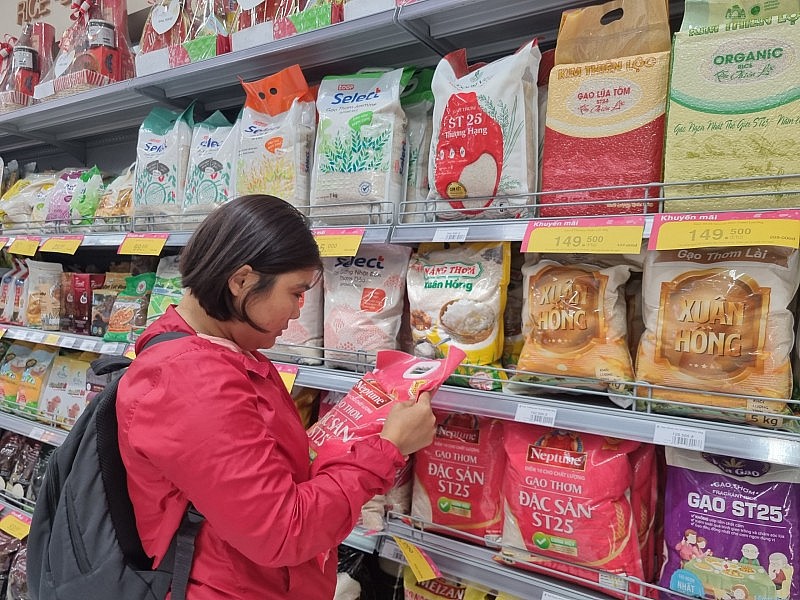 News
News
Demand is forecast to continue to exceed supply
In forecasts from the end of 2023, many experts and organizations have commented that in 2024, the global food stress situation will continue to recur due to many reasons.
The El Nino weather phenomenon causing drought in much of Asia in 2023 is forecast to continue in the first half of 2024. This is forecast to reduce Asia's rice output in the first half. year 2024.
Not only rice, but according to CoBank - the leading lending bank in the US agricultural sector, global grain and oilseed inventories are tightening. The northern hemisphere is likely to experience strong El Nino weather patterns for the first growing season since 2015.
Previously, in 2023, this phenomenon caused a serious decrease in the supply of rice, wheat, palm oil as well as other agricultural products in the world's leading agricultural export and import country. As a result, India - a rice exporter accounting for 40% of global output - issued an order restricting the export of common white rice. The country's sudden stoppage of supply while the demand for rice is high has caused world rice prices to continuously increase and depends on two main supply sources including Thailand and Vietnam.
 |
| In 2023, Vietnam will ensure domestic food security but still take advantage of the opportunity to export over 8 million tons of rice. |
A notable point, according to forecasts of the US Department of Agriculture (USDA), in the 2023-2024 crop year, although global rice production will increase compared to the 2022-2023 crop year, production will still remain. lower than consumer demand.
Regarding specific numbers, according to Ssresource Media Pte. Ltd (Singapore) stated that by the end of 2023, global rice production in the 2023-2024 crop year will likely reach 517,796 million tons - this is an increase of 4,441 million tons compared to the 2022-2023 crop year. However, global rice consumption in the 2023-2024 crop year is also forecast to increase by 856,000 tons compared to the 2022-2023 crop year when it was at 522.286 million tons. Thus, demand is increasing more than supply by about 4.5 million tons.
Meanwhile, India will still maintain the rice export restriction and may extend it until the end of the year because the country is still affected by El Nino, causing crops to decline. This, according to Mr. Subramanian from SSRESOURCE MEDIA Company (Singapore), will cause the market in 2024 to react favorably for Vietnamese rice.
In fact, at the end of 2023, international experts have made many predictions and affirmed that in 2024 countries such as Indonesia, Philippines and Malaysia... are forecast to continue to have high demand for rice imports. For example, Indonesia will import about 2.5 million tons of rice in 2023 and can buy an additional 1.5 million tons in 2024.
Opportunities for Vietnamese rice export
According to analysts, increased demand while supply shows no signs of improvement will continue to be a "bright door" for rice exporting countries. Because in 2023, as soon as India issues a ban on rice exports, Thailand and Vietnam - two countries with a large market share in the market - will "benefit". In particular, Thailand - in just 11 months of 2023, has exported nearly 8 million tons; As for Vietnam in 2023, according to estimates by the Ministry of Agriculture and Rural Development, rice export output will reach over 8 million tons with a record value of 4.78 billion USD.
Therefore, 2024 will continue to be an opportunity for countries with a large market share in the world like Vietnam. In particular, experts also predict that world rice prices will continue to remain high in 2024 and sellers will still have the advantage in price decisions.
“World rice demand continues to remain high to ensure food security, in which countries with great demand include the Philippines and Indonesia. Regarding rice supply, India will continue to maintain rice export restrictions in 2024, while climate change continues. These factors will make an important contribution to rice prices maintaining a high level until mid-2024" - said Mr. Do Ha Nam - Vice Chairman of the Vietnam Food Association.
Note for businesses
The existing opportunities are huge, but how to continue to take advantage of the opportunities and increase exports is an issue that experts and businesses in the industry are concerned about. This stems from the fact that high export prices have caused domestic prices to increase sharply, even higher than export prices. Along with that, in the last months of 2023, the amount of rice in the population will not be much, forcing export businesses to buy high to repay contract debt or be cautious in signing new orders, leading to many importers choosing other countries. to buy rice.
Analyzing specifically, Mr. Phan Van Co - Marketing Director of Vrice Co., Ltd. said that rice price fluctuations have increased too rapidly in recent times, leading to broken supply chains, broken link contracts, and Export enterprises have difficulty mobilizing sources of goods to carry out signed contracts. Not to mention, in the last months of the year, the domestic rice source was almost "dry" because businesses had sold it all - also making it difficult for businesses to sign new contracts. "Our rice price is currently very high, which is good, but on the other hand, it also causes businesses to lose opportunities because partners choose importers with more competitive prices" - Mr. Co shared.
In that context, to take advantage of opportunities, from the end of 2023, many businesses and people in the Mekong Delta region have taken advantage of sowing seeds for the Winter-Spring rice crop. The good news is that Vietnam's winter-spring rice crop is expected to be harvested in full force after the Lunar New Year - that is, around February - March 2024. Therefore, this will be an opportunity for Vietnamese rice in 2024.